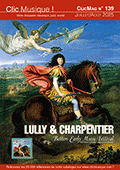 La transcription, l'art de transcrire le répertoire pour une combinaison d'instruments ou d'ensembles différents, a toujours fait partie intégrante du répertoire pour orgue. Un bon exemple en est la transcription par le compositeur et organiste Clément Loret des Concertos pour orgue de Haendel pour orgue solo dont les Concertos pour orgue Op. 4 et Op. 7 – à l'origine des intermèdes musicaux pendant les intervalles des Oratorios – que nous présente cet enregistrement. Les deux compositeurs se complètent : Loret, romantique tardif, intervient dans l'œuvre de Haendel, compositeur baroque virtuose et éblouissant, tout en conservant son esprit. Il préserve la densité de l'écriture contrapuntique, fusionnant sans réserve les parties d'orgue et d'orchestre, et conservant toujours l'éclat et la vivacité qui caractérisent l'original dans une projection virtuose vers l'orgue symphonique moderne. Cela permet à Ivan Ronda d'interpréter ces douze concertos, chacun avec son propre caractère, sa forme, son style et son atmosphère, pour nous offrir une grande fresque sonore, formelle et engagée avec un éventail de difficultés techniques et stylistiques considérables sur un orgue d'abbaye au son large, solennel et majestueux. C'est très réussi ! (Mathieu Niezgoda)  The Organ Concertos Op.4 and Op.7 by George Frideric Handel (1685–1759) were originally composed as musical interludes to be performed during the intervals of the Oratorios. Handel chose to write for the organ, an instrument hitherto relegated to the liturgical service, to emancipate it and have it take on a new character, more brilliant and appealing to the public. From the scores it is clear that these concertos do not have to be played on a large instrument, as they only sporadically require the use of the pedalboard, which therefore made the concertos also performable on the harpsichord. Transcription, the art of transcribing repertoire for a different instrument or ensemble combination, is absolutely an integral part of the boundless organ and keyboard literature dating from the distant Renaissance to the present day. One great example from the organ repertory is composer and organist Clément Loret’s (1833–1909) transcription of Handel’s Organ Concertos for solo organ. The two composers complement each other – Handel, a great virtuoso and dazzling composer of the Baroque period capable of gripping the most disparate audiences, and Loret, a late Romantic belonging to the great French school of Jacques-Nicolas Lemmens, where the organ is placed centre stage. Loret intervenes in Handel’s work whilst maintaining its spirit. He preserves the dense contrapuntal writing, merging organ and orchestral parts without reserve, and always retaining the brilliance and vivacity that characterise the original in virtuosic projection towards the modern symphonic organ. This all makes for a large sound and an array of significant technical and stylistic difficulties for the performer. The set of Op.4 and Op.7 taken together includes 12 concertos in total, each with its own character, shape, style and atmosphere. The tonalities used are those that were the most frequent and most in vogue during the Baroque period, except perhaps for the concerto in A major Op.7, which stands out not only for its tonality, but also for the particular elegance and fluctuation of its fugue theme.
 |
